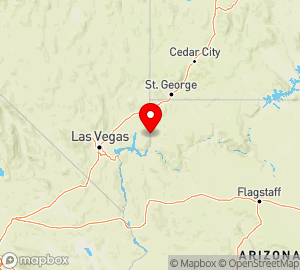Nevada
Nevada State Information

www.nv.gov
Area (sq mi):: 110560.71 (land 109825.99; water 734.71) Population per square mile: 22.00
Population 2005: 2,414,807 State rank: 0 Population change: 2000-20005 20.80%; 1990-2000 66.30% Population 2000: 1,998,257 (White 65.20%; Black or African American 6.80%; Hispanic or Latino 19.70%; Asian 4.50%; Other 13.50%). Foreign born: 15.80%. Median age: 35.00
Income 2000: per capita $21,989; median household $44,581; Population below poverty level: 10.50% Personal per capita income (2000-2003): $30,437-$31,910
Unemployment (2004): 4.60% Unemployment change (from 2000): 0.10% Median travel time to work: 23.30 minutes Working outside county of residence: 5.20%
List of Nevada counties:
Nevada Parks
- US National Parks
- State Parks
- National Wildlife Refuges
- National Scenic Byways
- National Forests
nevada
[nə′väd·ə]nevada
Nevada
Thirty-sixth state; admitted on October 31, 1864
Nevada Day is a legal holiday throughout the state observed the last Friday in October, but the most festive celebrations take place in Carson City, where the Admission Day parade has been held since 1938. There are historical Indian pageants, a costume ball, a Miss Nevada crowning, dancing, picnicking, games, and other events. Students have entered a historical essay contest since 1959, and the winners are awarded during the festivities.
State capital: Carson City Nicknames: Silver State; Sagebrush State; Battle-Born State State motto: All for Our Country State animal: Desert bighorn sheep (Ovis canadensis) State artifact: Tule duck State bird: Mountain bluebird (Sialia currucoides) State colors: Silver and blue State fish: Lahontan cutthroat trout (Salmo clarki henshawi) State flower: Sagebrush (Artemisia tridentata) State fossil: Ichthyosaur (Shonisaurus) State grass: Indian ricegrass (Oryzopsis hymenoides) State metal: Silver State precious gemstone: Virgin Valley Black Fire opal State reptile: Desert tortoise (Gopherus agassizii) State rock: Sandstone State semi-precious gemstone: Turquoise State soil: Orovada series State song: “Home Means Nevada” State trees: Single-leaf piñon (Pinus monophylla) and Bristle
cone pine (Pinus aristata)
More about state symbols at:
www.leg.state.nv.us/General/FACTS.cfm
dmla.clan.lib.nv.us/docs/nsla/services/nvfacts.htm
SOURCES:
AmerBkDays-2000, p. 743
AnnivHol-2000, p. 180
DictDays-1988, p. 81
STATE OFFICES:
State web site:
www.nv.gov
Office of the Governor
101 N Carson St
Carson City, NV 89701
775-684-5670
fax: 775-684-5683
gov.state.nv.us
Secretary of State
101 N Carson St
Suite 3
Carson City, NV 89701
775-684-5708
fax: 775-684-5725 sos.state.nv.us
Nevada State Library & Archives 100 N Stewart St Carson City, NV 89701 775-684-3360 fax: 775-684-3330 dmla.clan.lib.nv.us/docs/nsla
Legal Holidays:
Nevada
a state in the western USA. Area, 286,300 sq km; population, 489,000 (1970), of which 81 percent is urban. The capital is Carson City, and the most important cities are Las Vegas and Reno.
Most of the state lies in a mountainous area known as the Great Basin, which has no outflow. To the west are the spurs of the Sierra Nevada. The climate is continental and arid. The average January temperature in the lower elevations ranges from 0° to 2°C, and in July from 20° to 22°C. Annual precipitation amounts to about 200 mm (less than 100 mm in the foothills of the Sierra Nevada). The rivers have little water, and most of them dry up; the Colorado River is in the southeast. Vegetation is semidesert and desert.
Nevada is one of the least economically developed states in the USA, and it is the second least densely populated after Alaska. The mining industry is important (with some 4,000 employees). Nevada ranks second in the USA in the mining of gold (17,900 kg in 1970) and fifth in the mining of copper. Silver, tungsten, iron, manganese, molybdenum, polymetallic ores, and barite are also mined. Manufacturing is not very developed (with 8,000 employees in 1971). There are nonferrous metallurgical plants, small-scale enterprises of the food-processing, printing, and other industries. Hoover Dam, with its large hydroelectric power plant, is located in the southern part of the state, on the Colorado River. In 1972 the rated capacity of electric power plants amounted to 3.4 million kilowatts. The principal branch of agriculture is extensive livestock raising. In early 1972 there were 658,000 head of cattle and 204,000 head of sheep. Alfalfa, wheat, barley, and other crops are raised on irrigated land. Tourism is well developed.
IU. A. KOLOSOVA